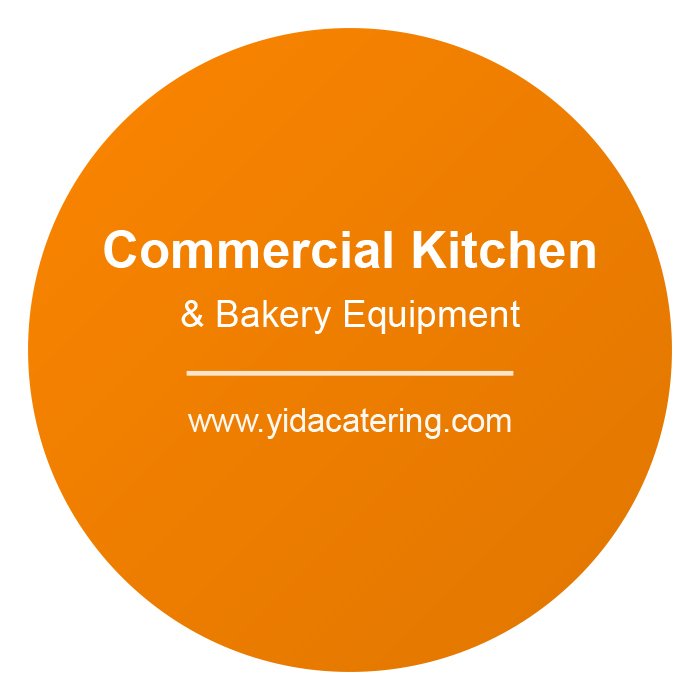In the world of commercial baking, choosing the right bread oven is a critical decision that can significantly impact the quality of your products and the efficiency of your operations. Whether you run a small artisan bakery or a large-scale industrial facility, understanding the various types of bread ovens available can help you make an informed choice tailored to your specific needs. Below, we explore the most common types of bread ovens used in commercial settings, along with their features, advantages, and ideal applications.
1. Deck Ovens
Deck ovens are a staple in many bakeries, particularly those specializing in artisan or European-style breads. These ovens feature flat baking surfaces, or “decks,” that are typically heated by gas or electricity. Some models also incorporate steam injection systems to create the perfect crust.
Key Features:
- Multiple baking decks for increased capacity
- Even heat distribution for consistent baking
- Steam injection for crusty bread varieties
Advantages:
- Ideal for baking bread with a crisp crust and soft interior
- Versatile and suitable for a variety of baked goods
- Compact design for bakeries with limited space
Best For:
Artisan breads, baguettes, sourdough loaves, and other high-quality bread products.
2. Convection Ovens
Convection ovens are widely used in commercial kitchens due to their efficiency and versatility. These ovens use fans to circulate hot air evenly throughout the baking chamber, ensuring uniform cooking and reducing baking times.
Key Features:
- Forced hot air circulation for even baking
- Rapid preheating capabilities
- Energy-efficient operation
Advantages:
- Faster baking times compared to traditional ovens
- Consistent results across multiple trays
- Suitable for a wide range of baked goods beyond bread
Best For:
High-volume production of rolls, sandwich loaves, and other soft bread varieties.
3. Rotary Rack Ovens
Rotary rack ovens are designed for high-volume production and are commonly found in large-scale bakeries. These ovens feature rotating racks that allow heat to reach all sides of the product evenly.
Key Features:
- Rotating racks for uniform baking
- Large capacity for mass production
- Steam injection options for specific bread types
Advantages:
- Efficient for large batches
- Consistent results across all trays
- Suitable for both bread and pastries
Best For:
Industrial-scale production of sandwich loaves, rolls, and other baked goods requiring consistent quality.
4. Tunnel Ovens
Tunnel ovens are a specialized type of oven primarily used in industrial bakeries. These ovens feature a conveyor belt system that moves the dough through different temperature zones for precise control over the baking process.
Key Features:
- Continuous conveyor system
- Customizable temperature zones
- High throughput capacity
Advantages:
- Ideal for large-scale, automated production
- Consistent results with minimal manual intervention
- Suitable for standardized bread products
Best For:
Mass production of packaged bread, such as sandwich loaves and buns.
5. Wood-Fired Ovens
For bakeries looking to create a rustic, traditional feel, wood-fired ovens offer a unique baking experience. These ovens use wood as a fuel source, imparting a distinct flavor and texture to the bread.
Key Features:
- High-temperature baking environment
- Natural wood-fired heat source
- Artisan aesthetic appeal
Advantages:
- Imparts unique flavors to bread
- Perfect for traditional and artisan-style baking
- Visually appealing for open-concept bakeries
Best For:
Sourdough loaves, flatbreads, and other specialty breads that benefit from a smoky flavor and high-temperature baking.
6. Combination Ovens
Combination ovens, also known as combi ovens, offer unparalleled versatility by combining convection, steam, and sometimes microwave heating in a single unit. These ovens are ideal for bakeries that produce a wide variety of products.
Key Features:
- Multiple cooking modes (convection, steam, or both)
- Programmable settings for precise control
- Compact design with high functionality
Advantages:
- Extremely versatile for diverse baking needs
- Energy-efficient and space-saving
- Delivers consistent results across different bread types
Best For:
Bakeries producing a mix of artisan breads, pastries, and other baked goods.
Conclusion
Selecting the right bread oven for your commercial bakery depends on several factors, including the type of bread you produce, the scale of your operation, and your specific workflow requirements. Deck ovens are perfect for artisan bakers seeking precision and quality, while rotary rack and tunnel ovens cater to large-scale production needs. For those aiming to create unique flavors or an authentic aesthetic, wood-fired ovens offer an excellent solution. Finally, combination ovens provide unmatched versatility for diverse baking demands.
Investing in the appropriate oven not only enhances the quality of your bread but also streamlines your operations, ensuring long-term success in the competitive world of commercial baking.

